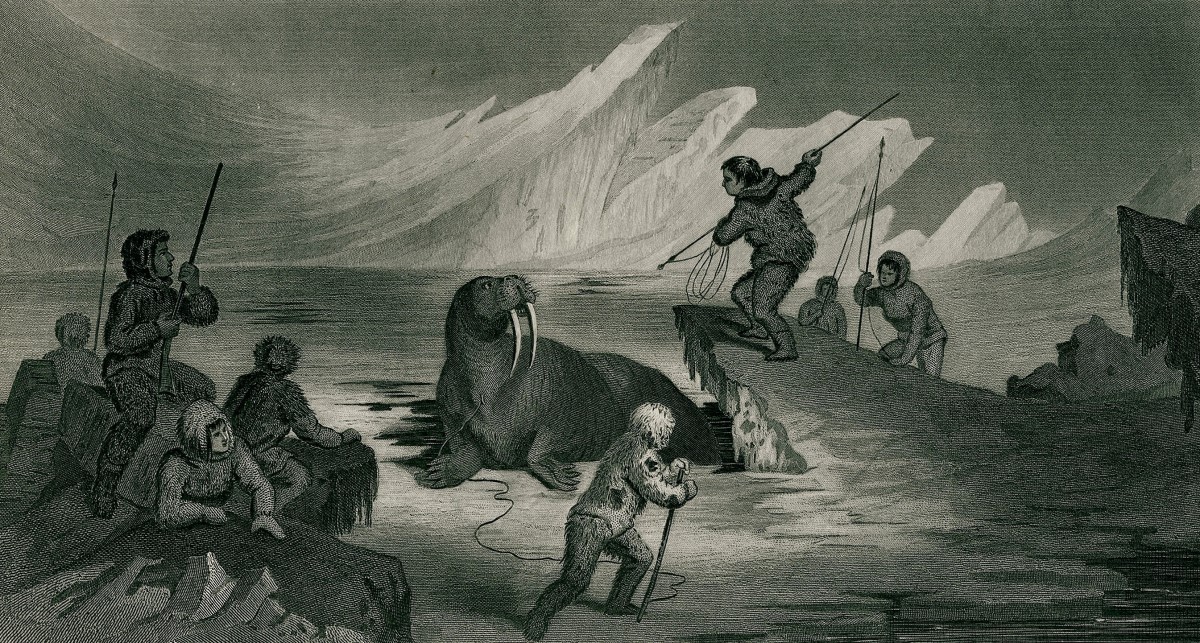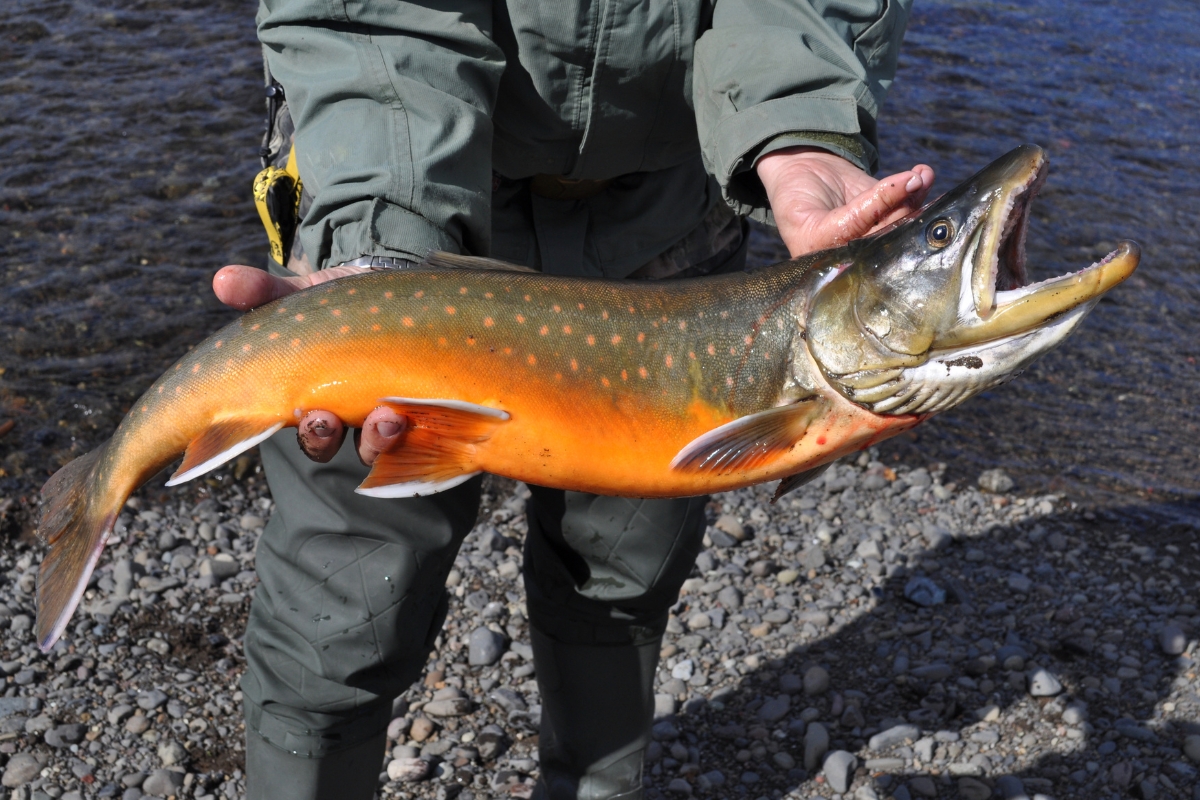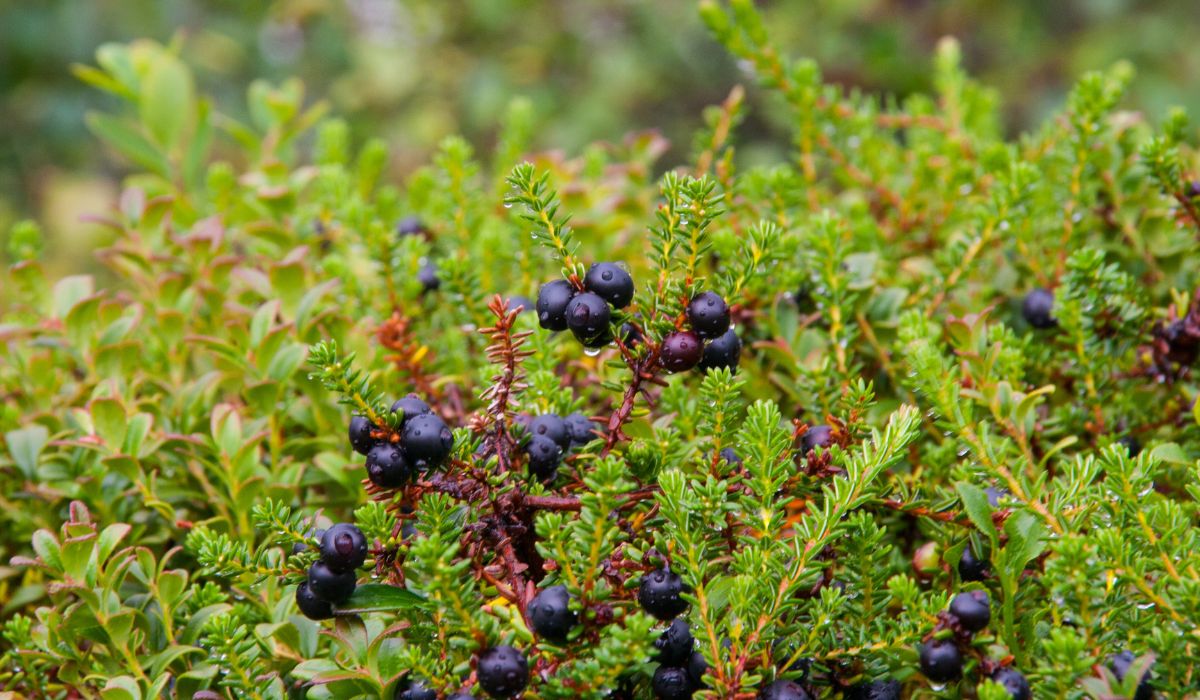


Greenland, with its vast icy landscapes and unique cultural heritage, offers a culinary experience like no other. Read on to find out what Greenlanders eat and drink – and why…
The basics
Greenlandic cuisine is a reflection of its geography and the traditions of its people. With its harsh Arctic climate, the traditional diet of the Inuit is based on ingredients that can withstand extreme conditions. Staples like fish, seal, whale, and various game meats form the core of Greenlandic cuisine. These protein sources have sustained the Inuit for generations and remain essential components of their diet. Raw and fermented foods also play a crucial role in Greenlandic cuisine. Fermented fish, for example, is a traditional delicacy that is enjoyed for its unique flavor and preservation qualities.
Section Type: standardWidthImageS
Depiction of walrus hunting in the 1800s. While the western world views these creatures as cute and cuddly, those living in such extreme, barren environments like Greenland depend on marine life for their survival.

Hunting and fishing are deeply rooted in Inuit culture. Greenlandic hunters and fishermen have a deep respect for the environment and adhere to sustainable practices. They understand the delicate balance of Arctic ecosystems and the importance of responsible harvesting.
Kalaallit Kaagiat (Greenlandic Cake)
One of the sweet delights of Greenlandic cuisine is Kalaallit Kaagiat, a traditional cake (more like a sweet bread) that’s often served at celebrations and gatherings. Made with raisins and flavored with cardamom it is “too sweet to be a sandwich bread, but not quite sweet enough to be a sweet bread to eat on its own.” We recommend adding some berry jelly!
Mattak: Controversy on a plate
Another iconic dish in Greenlandic cuisine is Mattak, made from whale skin and blubber. While it's a delicacy for some, it's also a controversial topic due to international debates about whaling. Mattak has deep cultural and social importance in Greenlandic communities. It's often shared as a sign of friendship and hospitality. Greenlanders argue that their traditional hunting practices are sustainable and crucial for their survival.
Seal meat and Arctic char
Section Type: standardWidthImageS
Arctic char is a fish in the Salmonidae family.

Two of the most prized ingredients in Greenlandic cuisine are Arctic char and seal. These ingredients offer unique flavors and are prepared in ways that reflect the Arctic's culinary heritage. Arctic char is a cold-water fish that thrives in the pristine waters of Greenland. It's appreciated for its delicate flavor and is often served smoked or grilled. Seal meat is another staple of the Greenlandic diet. It's used in a variety of dishes, from stews to sausages. The preparation methods have been perfected over generations.
Greenland in a glass
In addition to its unique cuisine, Greenland also offers a variety of traditional and contemporary beverages that reflect the culture and environment of the Arctic.
Kaffeemik: This traditional gathering is an opportunity to enjoy coffee, tea, and cakes. Greenlanders take their coffee seriously, and Kaffeemik is a cherished social tradition.
Coffee with a twist: Greenlandic coffee typically consists of strong coffee, Kahlúa or other coffee liqueurs, whipped cream, and often a dash of Grand Marnier. It’s cold in Greenland!
Berry delicious: Greenland's pristine landscape offers a wealth of wild berries, including blueberries, crowberries, and Arctic cloudberries. These are used to create refreshing berry juices and liqueurs.
Local brews: As Greenland becomes more connected to the global community, a scattering of craft breweries have emerged. They often incorporate traditional ingredients like Arctic herbs and berries to create unique flavors that capture the essence of Greenland.
Suaasat Soup: Although not strictly a beverage, Suaasat soup is a traditional Greenlandic dish made from seal or reindeer meat, often accompanied by potatoes, onions, and rice.
Section Type: standardWidthImageS
Crowberries. Autumn calls for harvest season – fruity drinks and pastries!

Old and news
While tradition forms the backbone of Greenlandic cuisine, modern influences are making their mark as well. Globalization has brought new ingredients, techniques, and flavors to Greenland. Fusion cuisine, combining traditional elements with international influences, is gaining popularity.
On the flipside, food serves as a powerful vessel for preserving Greenlandic cultural heritage. The passing down of traditional recipes and cooking methods from generation to generation is essential for maintaining cultural identity.
Come hungry
While it may not be as famous for its food as Italy, France or Thailand, Greenlandic cuisine has to be experienced to be believed. Eat and drink your way around the world’s largest island with SA Expeditions as your guide.
Section Type: cta
First peruse our most popular Greenland tours. Then speak to a Destination Expert about designing your own culinary adventure.


Copyright © 2025 SA Luxury Expeditions LLC, All rights reserved | 95 Third Street, 2nd floor, San Francisco, CA, 94103 | 415-549-8049
California Registered Seller of Travel - CST 2115890-50. Registration as a seller of travel does not constitute approval by the state of California.










